On Earth, we all know what changes our landscapes: water and wind erosion, tectonic activity, and volcanism. Today on Mars, wind-driven erosion is hard at work. Wind is an inexorable sculptor everywhere. And, it might have created places where planetary scientists and astrobiologists hunt for traces of primordial Martian life today.
Continue reading “Without Water and Life, Geology on Mars is Driven by the Wind”Perseverance Has Collected Samples from One of the Best Places to Search for Ancient Life on Mars
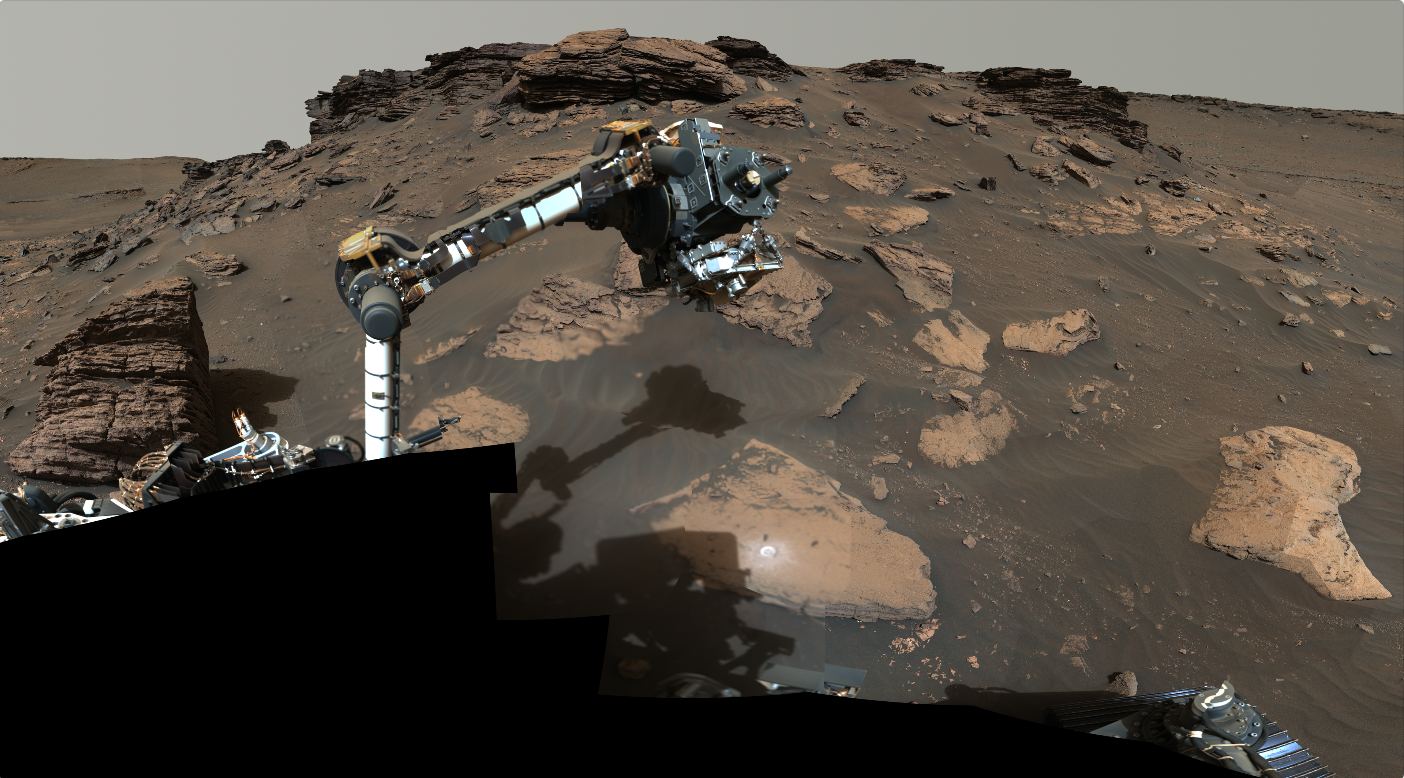
Scientists with NASA’s Perseverance Mars rover said today that the rover has collected several “tantalizing” organic rock samples from an ancient river delta on the Red Planet. These samples have now been stowed for a planned future mission that hopes to retrieve the specimens and bring them back to Earth for the first-ever sample return from Mars.
Continue reading “Perseverance Has Collected Samples from One of the Best Places to Search for Ancient Life on Mars”The Geology at Jezero Crater is Even More Complex Than Scientists Were Expecting

On February 18th, 2021, the Perseverance rover landed in the Jezero Crater on Mars. Since then, Perseverance has been exploring the region in search for evidence of past (and possibly present) life – much like its cousin, the Curiosity rover. This includes obtaining samples that will be placed in a cache and retrieved by a future ESA/NASA sample-return mission. These will be the first directly-retrieved samples of Martian rock and soil that will be analyzed in a laboratory on Earth, which are expected to reveal some tantalizing bits about the history of the Red Planet.
But it appears that we don’t need to wait on the sample-return mission since the Perseverance rover is already sending some surprising data back to Earth. According to a new study by a research team led by the University of California at Los Angeles (UCLA) and the University of Oslo, Perseverance’s ground-penetrating radar detected that the rock layers beneath the crater are strangely inclined. These strange sections could have resulted from lava flows that slowly cooled or could be sedimentary deposits from an underground lake.
Continue reading “The Geology at Jezero Crater is Even More Complex Than Scientists Were Expecting”New Perseverance Rock Samples Were Altered by Water. They'll be Coming Back to Earth in the Sample Return Mission

The Perseverance rover is enjoying a bit of a winning streak lately! For the past year and a half, the rover has been exploring the Jezero crater on Mars to learn more about the planet’s past. As part of this mission, Perseverance is obtaining samples of Martian rock and soil that it will set aside in a cache for future retrieval. As part of a NASA/ESA sample-return mission, these will be returned to Earth for analysis and could contain evidence of past life. Thanks to the international team of geologists and astrobiologists overseeing the collection process, the first of these rock samples have been obtained!
Continue reading “New Perseverance Rock Samples Were Altered by Water. They'll be Coming Back to Earth in the Sample Return Mission”Perseverance has Found a ‘Cat Hair’ in its Drill Chuck. What is it?
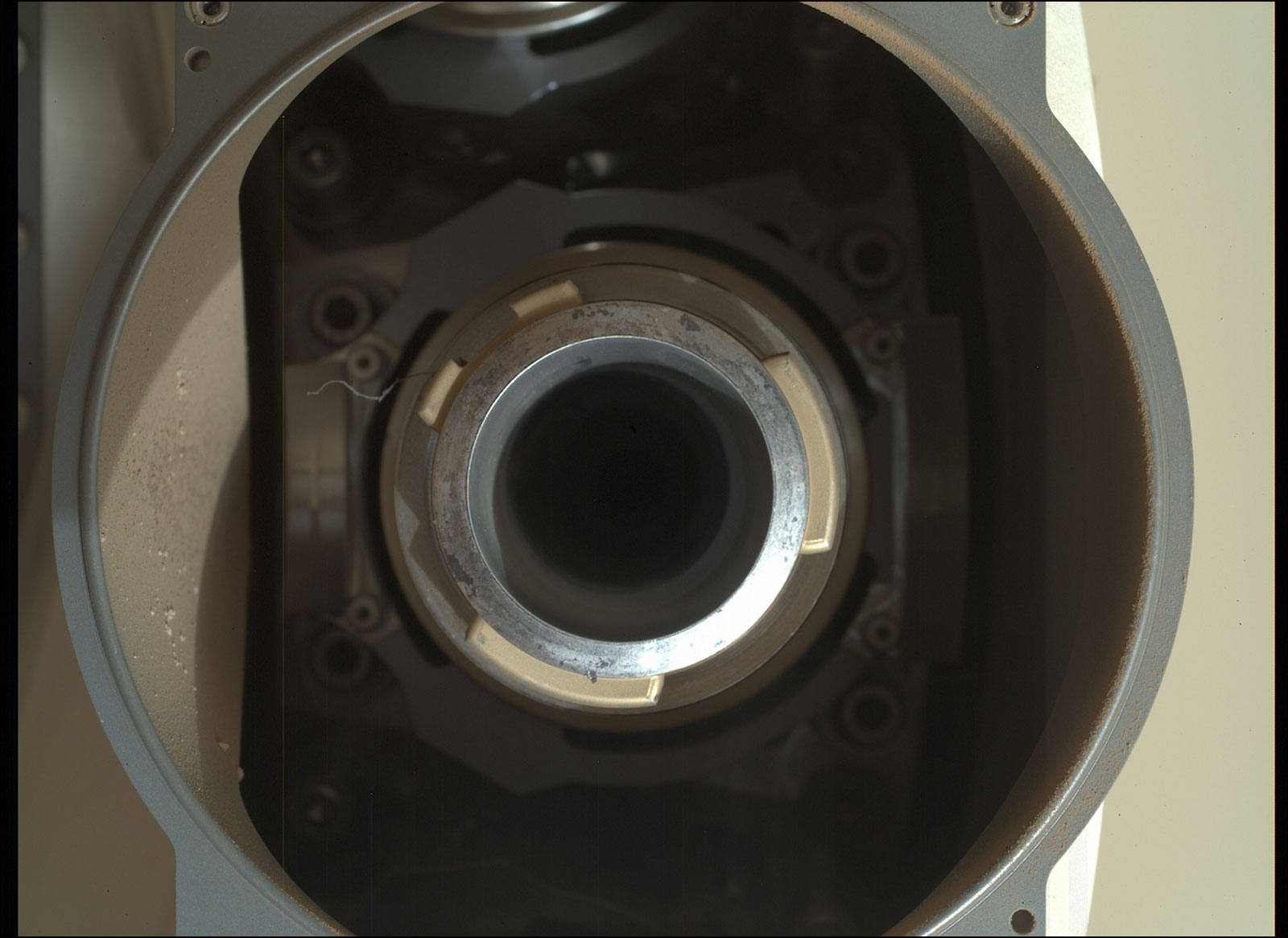
After each use of one of the tools at the end of the Perseverance rover’s arm, the mission’s engineering team always takes images of the tool to make sure everything is still in working order.
Last week the rover’s drill was used to take a core sample from a rock – the 12th such sample that has now been stored and sealed for possible future retrieval in a proposed sample return mission. The team then took images of the drill and sample collection system components. In those images, two small pieces of debris were visible: a small object on the coring bit (which is stored in the bit carousel) and a small hair-like object on the drill chuck.
Continue reading “Perseverance has Found a ‘Cat Hair’ in its Drill Chuck. What is it?”A Look Inside One of Perseverance’s Core Holes
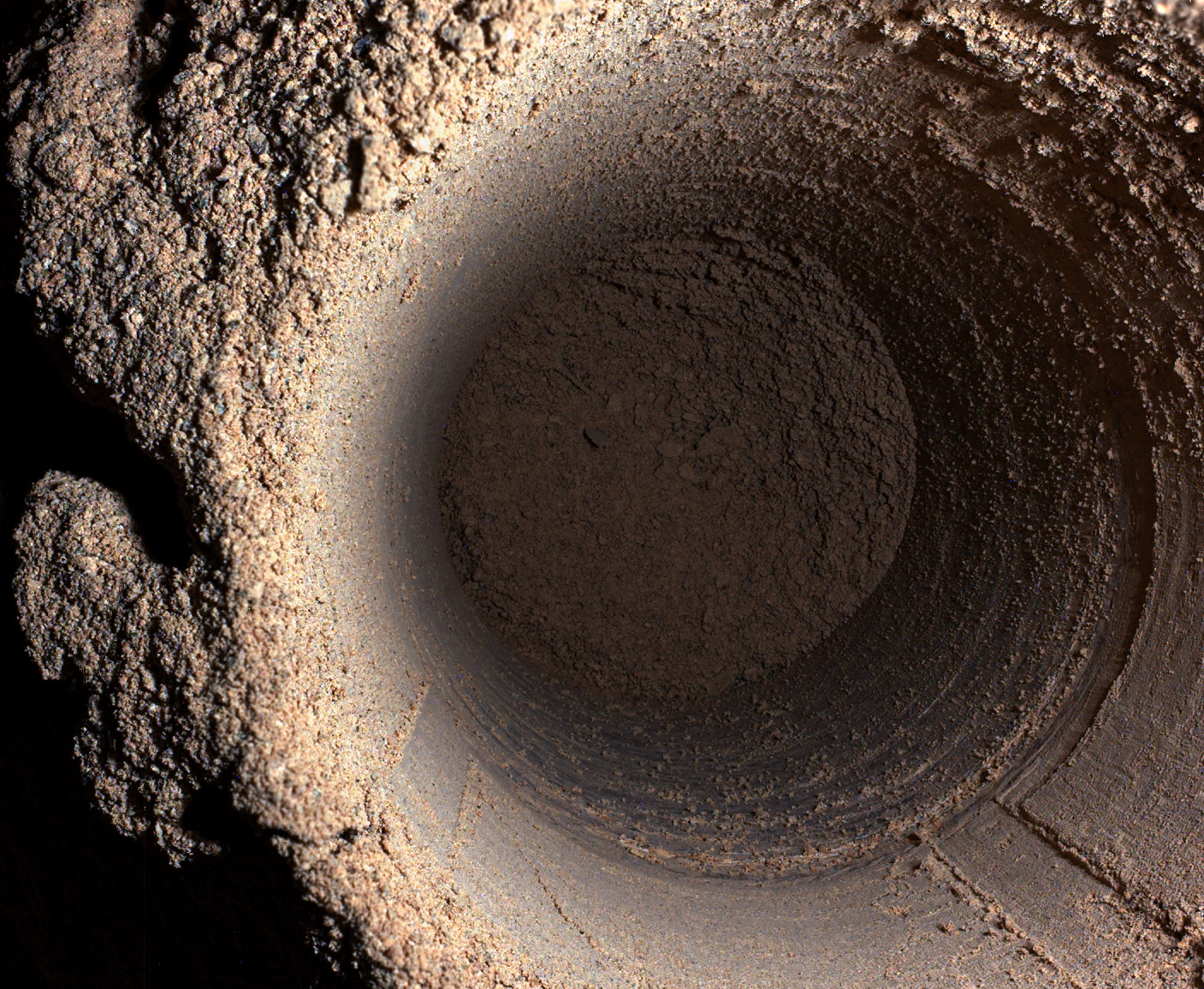
Here’s one of the best views you’ll ever see of the insides of a rock on Mars. The hole was made by the Perseverance rover’s drill, a rotary percussive drill designed to extract rock core samples from the surface of Mars. After the sample was taken, Perseverance rover acquired this image using its SHERLOC WATSON camera to take a close-up view of the hole.
This is such a clear image because image editing expert Kevin Gill used a technique called focus merge to get the best view possible. A “focus merge” uses a series of images taken at different focuses, stacks them up and uses whichever pixels are the sharpest. You can see a larger version on Kevin’s Flickr page.
Continue reading “A Look Inside One of Perseverance’s Core Holes”Weird String-Like Object Found on Mars, Probably Dropped by the Rover

Here’s the best evidence I’ve ever seen for water on Mars: NASA’s Perseverance rover came across a tangled mess of string on Mars, which looks like snarled fishing line left behind by a frustrated angler. Where there’s fishing, there’s gotta be water, right?
Actually, this tiny piece of trash is likely something left over from Perseverance’s parachute, or descent stage or even the backshell, which all worked in tandem to bring the rover safely to the surface of Mars back in February of 2021.
Continue reading “Weird String-Like Object Found on Mars, Probably Dropped by the Rover”A Perfectly Balanced Rock Seen by Perseverance
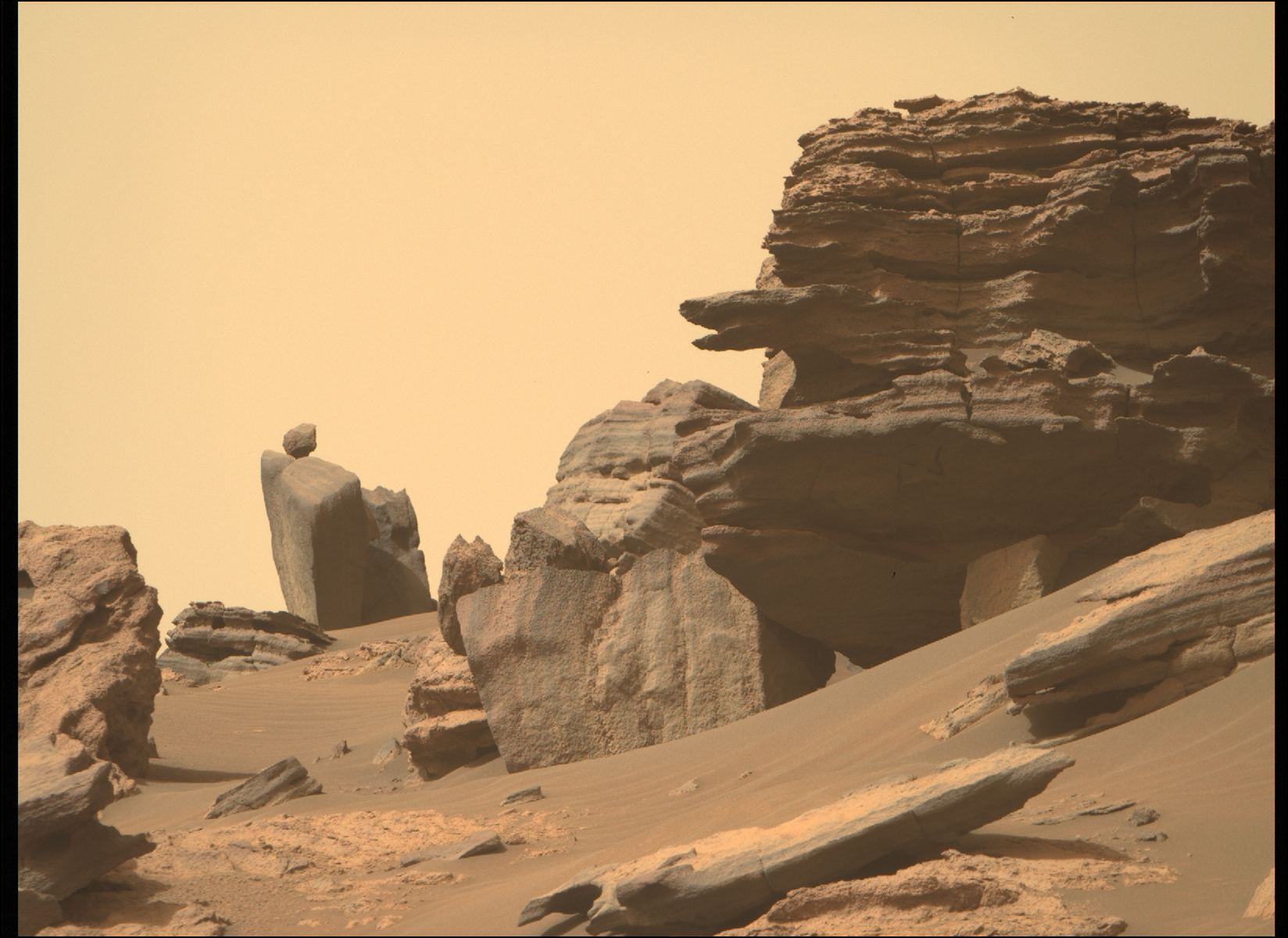
The Perseverance rover has begun exploring a region that looks a little like Monument Valley in Arizona and Utah in the US, or perhaps like a set on an old sci-fi movie. The rover’s science team has nicknamed the area “Hogwallow Flats,” and the rock formations in this area on Mars are stunning in their varied and sometimes absurd shapes and structures. One wonders what took place here eons ago to create the weird variety of formations.
While small, one feature catches the eye: a smaller rock that appears to be perfectly perched and balanced on top of a larger rock formation.
Continue reading “A Perfectly Balanced Rock Seen by Perseverance”Perseverance Has Been Carrying a Rock in its Wheel for Over 100 Days
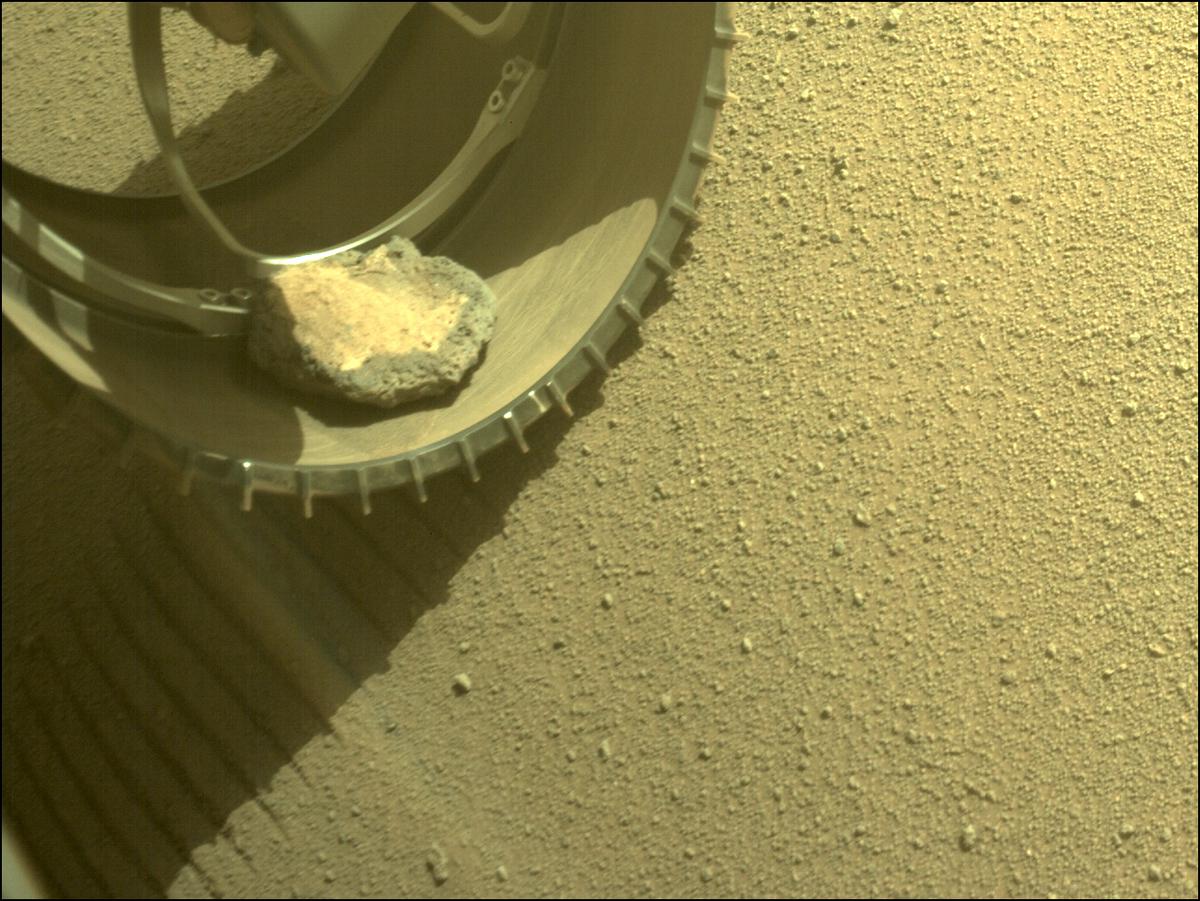
Why does a Mars rover have a rock in one of its wheels? Maybe it’s because a rover doesn’t have pockets.
Who among us hasn’t picked up a great rock, carried it around, maybe saved it for a long time, or even placed it somewhere safe or special? The Perseverance rover is doing just that, having carried a random Mars rock in its wheel for quite some time.
Continue reading “Perseverance Has Been Carrying a Rock in its Wheel for Over 100 Days”Ingenuity has Lost its Sense of Direction, but It’ll Keep on Flying
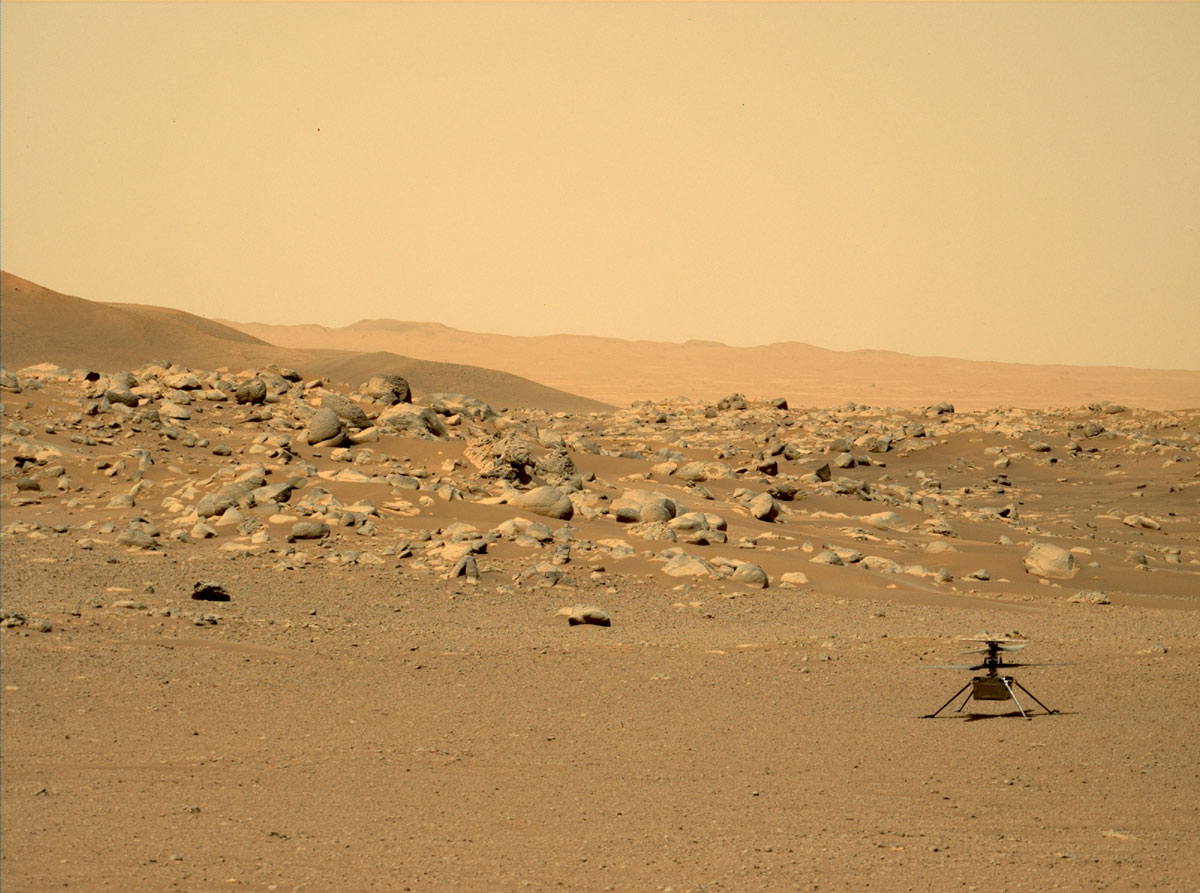
Things are getting challenging for the Ingenuity helicopter on Mars. The latest news from Håvard Grip, its chief pilot, is that the “Little Chopper that Could” has lost its sense of direction thanks to a failed instrument. Never mind that it was designed to make only a few flights, mostly in Mars spring. Or that it’s having a hard time staying warm now that winter is coming. Now, one of its navigation sensors, called an inclinometer, has stopped working. It’s not the end of the world, though. “A nonworking navigation sensor sounds like a big deal – and it is – but it’s not necessarily an end to our flying at Mars,” Grip wrote on the Mars Helicopter blog on June 6. It turns out that the controllers have options.
Continue reading “Ingenuity has Lost its Sense of Direction, but It’ll Keep on Flying”
